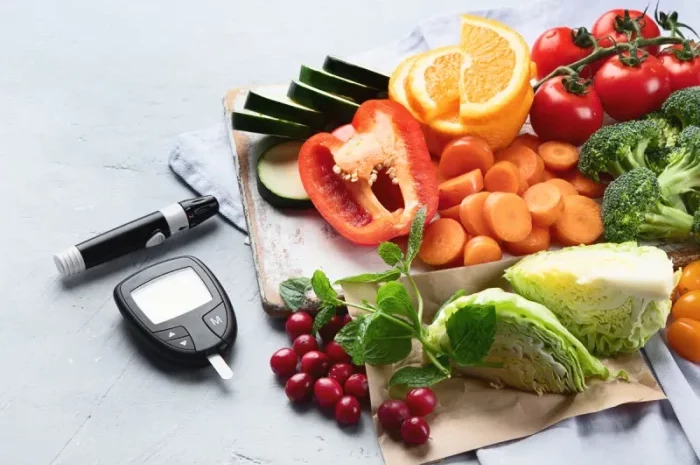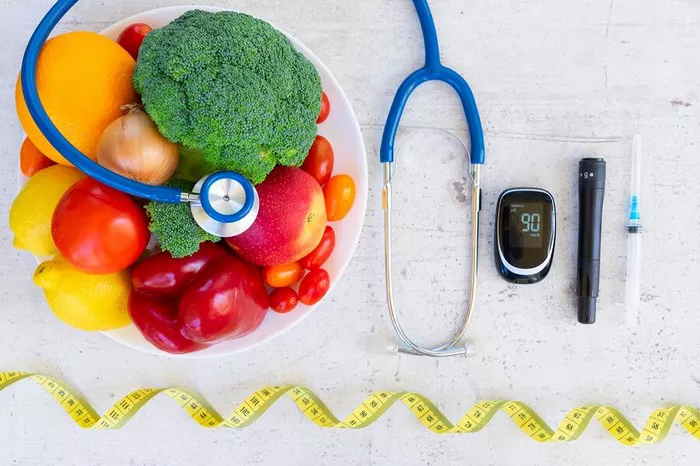Diabetes, particularly Type 2 diabetes, is a chronic condition where the body either does not produce enough insulin or cannot effectively use the insulin it produces. Over time, this leads to elevated blood sugar levels, which can cause serious complications such as heart disease, nerve damage, kidney disease, and vision problems. For many, managing diabetes through diet and lifestyle changes is essential for controlling the condition and possibly even reversing it in some cases. This article will explore the foods that have been linked to helping reverse or manage diabetes, focusing on nutritional strategies that may aid in improving insulin sensitivity, reducing blood sugar, and promoting overall health.
Understanding the Role of Diet in Diabetes Management
Before diving into specific foods, it’s essential to understand how diet plays a central role in diabetes management. The primary goal for individuals with diabetes is to regulate blood sugar levels. This can be achieved by:
Controlling carbohydrate intake: Carbohydrates have the most significant effect on blood sugar levels, so managing the type and amount of carbohydrates consumed is crucial for maintaining stable blood glucose levels.
Improving insulin sensitivity: Certain foods can improve the body’s ability to respond to insulin, thus helping to reduce insulin resistance, a common issue in Type 2 diabetes.
Managing inflammation: Chronic inflammation is often present in individuals with diabetes and can worsen insulin resistance. Anti-inflammatory foods may help reduce this.
Promoting weight loss: Excess weight, especially abdominal fat, contributes to insulin resistance. Foods that help with weight management can play a role in reversing or managing diabetes.
Foods That May Help Reverse Diabetes
1. Leafy Greens and Non-Starchy Vegetables
Leafy greens such as spinach, kale, Swiss chard, and collard greens are nutrient-dense, low in calories, and have a low glycemic index (GI), meaning they do not cause sharp spikes in blood sugar. These vegetables are rich in vitamins, minerals, and fiber, which can aid in blood sugar control and overall metabolic health.
Nutritional Benefits: Leafy greens are high in antioxidants, magnesium, and fiber, all of which contribute to better blood sugar regulation. The magnesium content in particular has been shown to help improve insulin sensitivity.
How They Help: Regular consumption of these vegetables can improve glycemic control, promote weight loss, and lower the risk of complications related to diabetes.
2. Fiber-Rich Foods: Beans, Lentils, and Whole Grains
Fiber plays a critical role in regulating blood sugar levels by slowing the absorption of sugar and improving insulin sensitivity. High-fiber foods include beans, lentils, oats, and whole grains like quinoa, barley, and brown rice.
Nutritional Benefits: Fiber-rich foods help slow the release of glucose into the bloodstream, preventing rapid blood sugar spikes. They also promote healthy gut bacteria, which can influence insulin sensitivity and metabolism.
How They Help: Studies have shown that increasing fiber intake can lead to improved blood sugar control in individuals with Type 2 diabetes. For example, beans and lentils have a low GI and can help manage blood sugar levels.
3. Fatty Fish: Salmon, Sardines, and Mackerel
Fatty fish like salmon, sardines, mackerel, and herring are high in omega-3 fatty acids, which have been shown to reduce inflammation and improve insulin sensitivity.
Nutritional Benefits: Omega-3 fatty acids, found in these fish, are known for their anti-inflammatory effects. They may also improve the function of the heart, which is especially important for people with diabetes who are at a higher risk of cardiovascular disease.
How They Help: Studies suggest that omega-3 fatty acids can reduce triglyceride levels, lower inflammation, and improve blood vessel function, which helps in managing diabetes and reducing the risk of cardiovascular complications.
4. Avocados: A Source of Healthy Fats
Avocados are an excellent source of monounsaturated fats, which help reduce insulin resistance and promote healthy blood sugar levels. They are also high in fiber, which adds to their ability to regulate blood sugar.
Nutritional Benefits: Avocados are rich in healthy fats, fiber, potassium, and antioxidants like vitamin E and lutein. These nutrients support blood sugar regulation and cardiovascular health.
How They Help: Studies have shown that avocados may reduce abdominal fat, improve insulin sensitivity, and help stabilize blood sugar levels.
5. Nuts and Seeds: Walnuts, Almonds, and Chia Seeds
Nuts and seeds, such as walnuts, almonds, chia seeds, and flaxseeds, are rich in healthy fats, fiber, and plant-based protein. They have a low glycemic impact and are packed with antioxidants, vitamins, and minerals that can improve overall metabolic health.
Nutritional Benefits: Nuts and seeds are high in heart-healthy fats, fiber, magnesium, and antioxidants. They are also known for their ability to reduce oxidative stress and inflammation in the body.
How They Help: Consuming nuts and seeds regularly has been shown to lower blood sugar levels, improve insulin sensitivity, and reduce the risk of heart disease—important factors for individuals with diabetes.
6. Berries: Blueberries, Strawberries, and Raspberries
Berries are not only low in sugar but also high in fiber and antioxidants, especially anthocyanins, which have been shown to have anti-inflammatory and blood sugar-lowering effects.
Nutritional Benefits: Berries are rich in vitamins C and K, manganese, and fiber. Their antioxidant properties help protect cells from oxidative stress, a factor linked to insulin resistance and Type 2 diabetes.
How They Help: Studies have shown that berries can improve blood sugar control, enhance insulin sensitivity, and provide anti-inflammatory benefits, making them a great addition to a diabetes-reversing diet.
7. Cinnamon and Turmeric: Spice Up Your Diet
Both cinnamon and turmeric have been found to help regulate blood sugar levels and reduce inflammation, two key factors in managing diabetes. These spices are rich in compounds that have therapeutic effects on insulin sensitivity and glucose metabolism.
Nutritional Benefits: Cinnamon contains compounds like cinnamaldehyde, which can enhance insulin sensitivity. Turmeric’s active compound, curcumin, has potent anti-inflammatory properties that may also reduce insulin resistance.
How They Help: Research suggests that cinnamon can help lower blood sugar levels and improve insulin sensitivity, while curcumin has been shown to help manage inflammation and reduce the risk of developing complications associated with diabetes.
8. Apple Cider Vinegar
Apple cider vinegar (ACV) is known for its potential to lower blood sugar levels after meals. It can improve insulin sensitivity and slow down the digestion of starches, which helps to keep blood sugar levels stable.
Nutritional Benefits: ACV contains acetic acid, which has been found to lower blood sugar by improving insulin sensitivity and reducing carbohydrate absorption.
How It Helps: Studies have demonstrated that consuming ACV before meals can reduce post-meal blood sugar spikes, which may help individuals with Type 2 diabetes maintain better glycemic control.
9. Garlic: A Natural Blood Sugar Regulator
Garlic is well-known for its ability to promote heart health, but it may also play a role in regulating blood sugar levels. The compounds found in garlic, particularly allicin, have been shown to improve insulin sensitivity.
Nutritional Benefits: Garlic is rich in sulfur compounds, particularly allicin, which is thought to have various health benefits, including reducing inflammation and improving blood sugar control.
How It Helps: Studies have shown that garlic can reduce fasting blood glucose levels and enhance insulin sensitivity, making it an excellent addition to a diabetes-reversing diet.
10. Green Tea
Green tea is packed with antioxidants known as catechins, particularly epigallocatechin gallate (EGCG), which have been shown to help improve insulin sensitivity and reduce blood sugar levels.
Nutritional Benefits: Green tea is rich in antioxidants, vitamins, and minerals that help promote overall health. It contains caffeine, which may also help with weight loss by boosting metabolism.
How It Helps: Research suggests that green tea can help regulate blood sugar levels, reduce insulin resistance, and lower the risk of Type 2 diabetes. Additionally, the EGCG in green tea has been linked to improved fat metabolism, which may aid in weight management.
Conclusion
While no single food will reverse diabetes on its own, a balanced, nutrient-rich diet that includes the foods mentioned above can significantly help manage and even reverse Type 2 diabetes in some individuals. Focusing on whole, minimally processed foods that are rich in fiber, healthy fats, antioxidants, and anti-inflammatory compounds is essential for improving insulin sensitivity, controlling blood sugar levels, and supporting overall metabolic health.
However, it’s important to remember that dietary changes should be combined with other lifestyle modifications such as regular physical activity, stress management, and maintaining a healthy weight. Before making significant dietary changes, it’s always advisable to consult with a healthcare professional, such as a doctor or registered dietitian, to tailor an approach that’s best suited to your individual health needs and goals.
By prioritizing a well-rounded, healthy diet, individuals with diabetes may not only manage their condition but also improve their overall quality of life.
Related topics:
What’s Best Diet Plan for Type 2 Diabetes



























